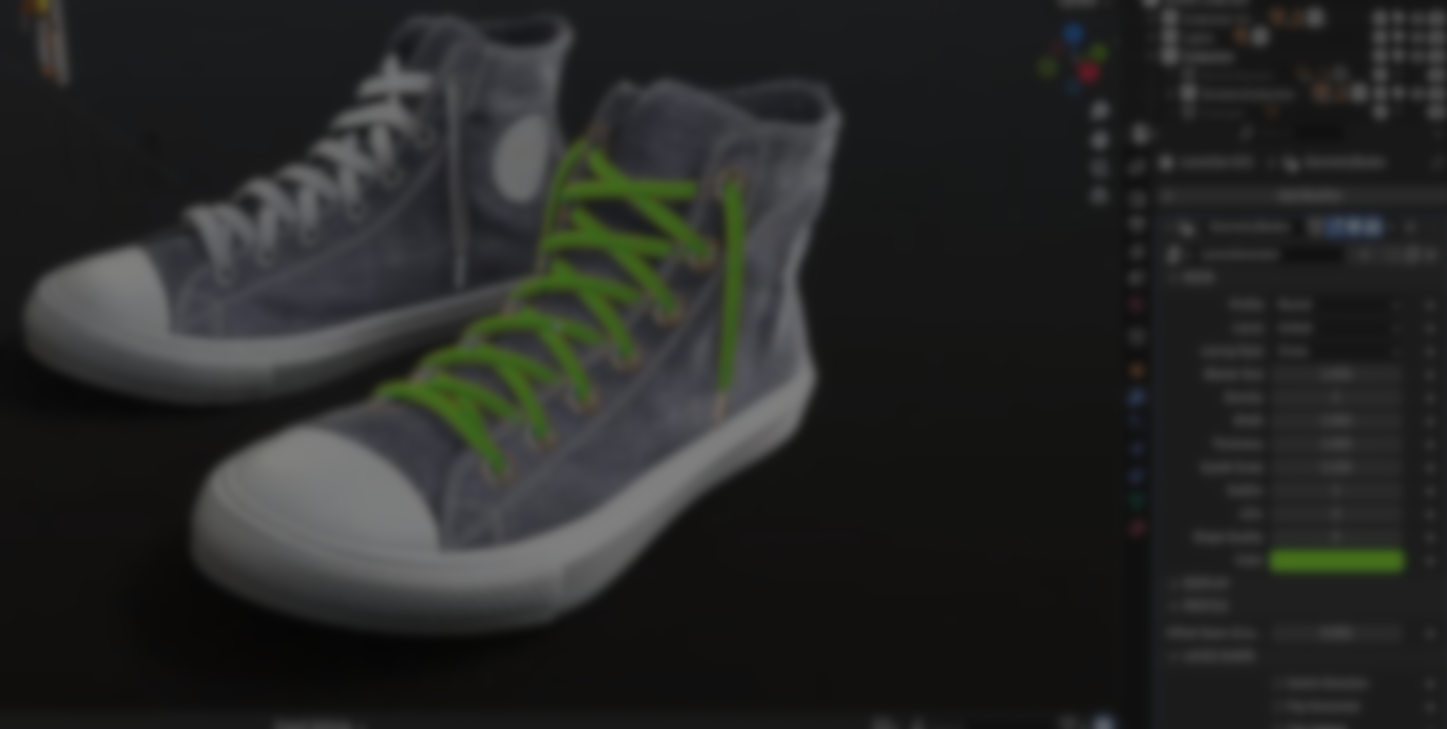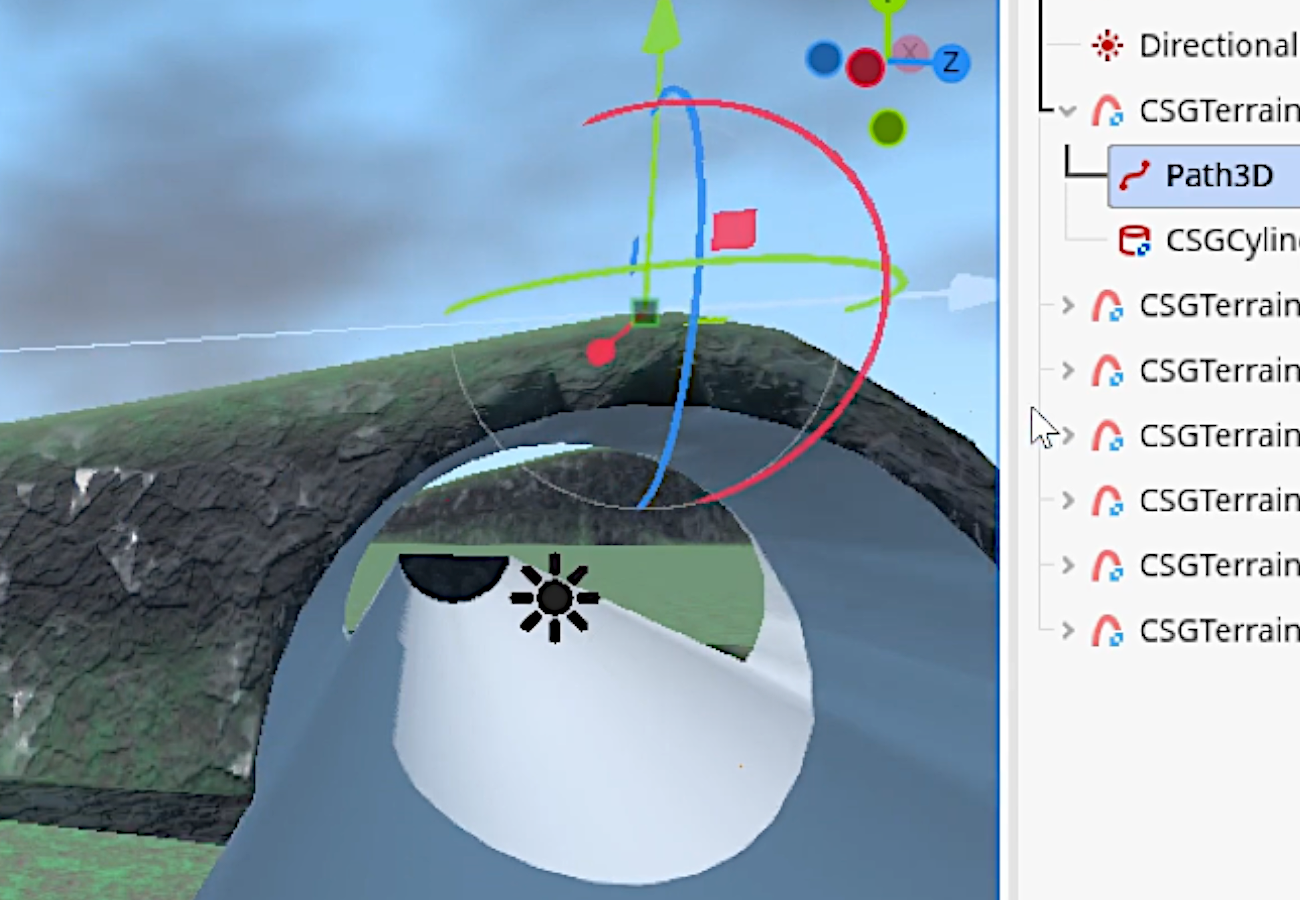
Working with footwear assets in Blender often requires manual lacing, careful UVs, and a lot of cleanup. Laces Generator by Piotr Popek offers a procedural alternative that automates the entire process while keeping everything editable and flexible for stylized or realistic projects.
Laces Generator 2.0 is out! New eyelet types, additional lacing style, custom profile and much more!
byu/Popshmir3d inblender
Laces Generator is fully compatible with Blender 4.2+ and builds laces directly on top of a simple plane mesh, using Geometry Nodes to generate eyelets, lace profiles, lacing patterns, and eyestay strips. Everything is procedural until you decide to apply the modifier, at which point the laces become standard editable geometry.
What This Tool Does
Laces Generator creates procedural laces driven by the geometry and UVs of a plane. The add-on generates eyelets on boundary vertices, builds the weaving pattern automatically, and allows swapping source meshes for custom aglets, eyelets, or lace shapes.
Everything is controlled through a single modifier, making it easy to adjust style, density, width, thickness, and whether the laces are tied or untied. The system supports three eyelet types (ring, D-ring, and hook), multiple lace styles (cross or straight bar), and fully customizable profiles.
.jpg)
.jpg)
.jpg)
Main Features
- Fully Procedural Pipeline: Laces, eyelets, and eyestays are generated entirely through Geometry Nodes.
- Multiple Lacing Styles: Switch between Cross and Straight Bar lacing. You can even mix them using Mark Sharp on specific edges.
- Flat, Round, or Custom Lace Profiles: Use built-in profiles or plug in your own mesh for custom lace shapes.
- Three Eyelet Types: Standard ring eyelets, D-ring eyelets, and hook eyelets controlled through Edge Crease (Shift+E).
- Tied or Untied Laces: Swap guide meshes in the Source panel for custom endings.
- Consistent Trim UVs: UVs are preserved and generated procedurally for clean texture handling.
- Editable After Applying: Apply the modifier to convert everything into a standard mesh ready for manual refinement.
How It Works
Laces Generator operates on a plane mesh, placing eyelets along its boundary and weaving laces procedurally based on geometry and UVs.
You select the lacing style, profile, density, or tied/untied mode, and the system automatically regenerates the lace and eyestay shapes.
The modifier exposes controls for profile type, lacing style, density, scale, eyelet adjustments, and display options. All elements can be customized or replaced through the Source panel.
For eyelets:
- Use Shift+E (Edge Crease) to cycle between ring, D-ring, and hook types
- Adjust slides, offsets, and loop shape directly from the modifier
Troubleshooting notes:
- Turn off Correct UVs when sliding edges
- Disable Correct Face Attributes if UVs behave incorrectly
- Laces are generated using the underlying UV layout, so avoid operations that distort UVs unexpectedly
Use Cases
- Creating realistic shoelaces for characters or footwear assets
- Generating lacing systems for backpacks, garments, props, gloves, or accessories
- Fast prototyping of footwear variations
- Preparing clean, consistent geometry for texturing
- Producing tied/untied variations without manual re-modeling
Similar and Useful Tools
- Physical Cables Next Gen: This add-on focuses on generating and simulating cables, wires and ropes in Blender. It supports over 20 procedural geometry types (cables, wires, ropes, ivy, organic structures), allows defining start/end points or distributing across objects, and includes physics-based slack, tension and break simulation.
Differences: While Laces Generator 2.0 targets shoelaces, eyelets and specific details for footwear accessories, Physical Cables Next Gen is more general: cables, wires, ropes in industrial/architectural contexts. It’s heavier, more simulation-oriented and less focused on tight UV/mesh detail for lacing.
- Belt Maker: This is a Geometry Nodes tool from the same author for generating belts, straps, loops, holes, and buckles procedurally. It provides fine control over belt length, curvature, and decorative elements.
Differences: While Laces Generator focuses on shoelaces and lacing patterns, Belt Maker targets belts and straps.
✨ Laces Generator 2.0 is now available on Superhive.
📘 Interested in creating your own tools and shader effects? Check out the Godot Shaders & Blender Tools Bundle, which includes two books: Blender Tool Development Fundamentals and The Godot Shaders Bible.
✨ Laces Generator 2.0 is now available on Superhive.
📘 Interested in creating your own tools and shader effects? Check out the Godot Shaders & Blender Tools Bundle, which includes two books: Blender Tool Development Fundamentals and The Godot Shaders Bible.
Our best-selling indie Bundle: Godot shaders + Blender tools ✨ https://t.co/zSlHDCuGVC#b3d #GodotEngine #3DCG pic.twitter.com/sjdYxXjKUB
— The Unity Shaders Bible (@ushadersbible) November 16, 2025




